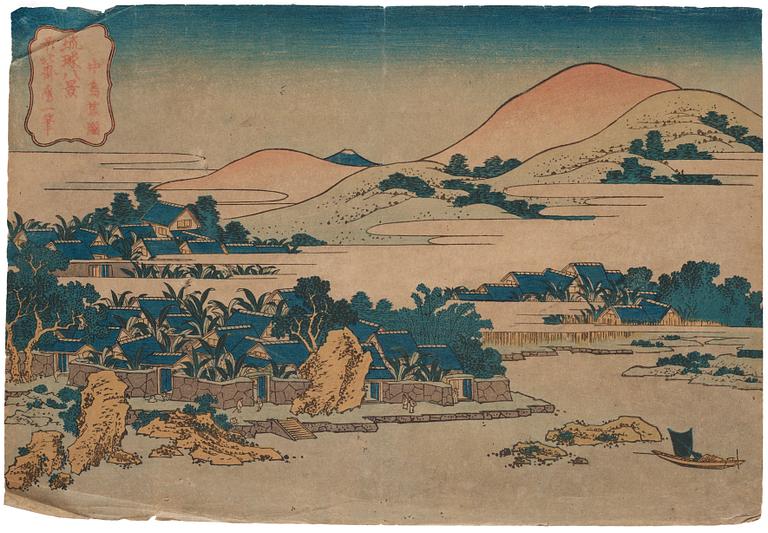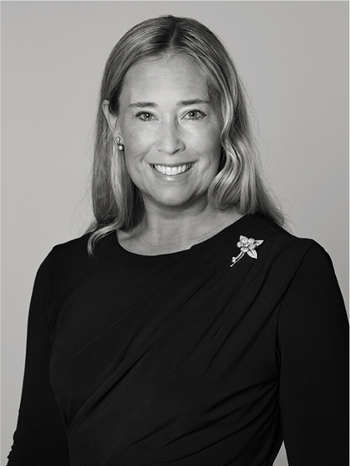Katsushika Hokusai
A Japanese colour woodblock print by Katsushika Hokusai (1760-1849), ca. 1832.
"Banana Garden at Nakashima (Nakashima shôen) 琉球八景 中島蕉", from the series "Eight Views of the Ryûkyû Islands (Ryûkyû hakkei)". Sheet size 25.5 x 37 cm.
Wear. Common fold. Creases. Tears. Minor stains. Cropped in the margin.
Provenance
From the Collection of Axel Sjöberg (1866-1950). Thence by descent. Axel Sjöberg is a well-known Swedish painter, who is famous for his representations of the archipelago around Stockholm. He grew up at Skeppsholmen in Stockholm. In 1880 he was employed by Generalstabens litografiska anstalt where he also came to work with prints and photography. He illustrated several books. In 1909 there was a large exhibition with him at Liljevalchs konsthall but the real breakthrough for him was from his exhibitions in Copenhagen 1917 and at Liljevalchs in 1918
Exhibitions
Compare with a similar impression in the collections of Museum of Fine Arts Boston with the accession number: 21.6704.
Compare one in the collection of The Metropolitan Museum, New York, Accession Number: JP2913. Bequest of Henry L. Phillips, 1939.
Literature
Hokusai's prints of the Ryūkyū were probably made to commemorate the Ryūkyū mission's arrival at Edo in November 1832. Although the original gazetteer that inspired Hokusai was in black and white, his series is in exquisite color. We can see not only his use of color to heighten the exotic ambiance of the Ryūkyū Islands, but also his imaginative power to make alien islands familiar in the guise of Eight Views. The artist carefully selected representative elements of the Eight Views, such as moon, sailboats and snow.
Artist
Katsushika Hokusai (1760-1849) is considered one of the greatest artists in Japanese history, and one of the important masters of the Japanese woodblock print. He was the son of the mirror maker Nakajima Issai and was born in 1760 into a family of craftsmen where he reportedly started drawing as early as six years old. Trained as a woodcarver, Hokusai was an apprentice to the artist and printmaker Katsugawa Shunsho, but was forced to quit seven years later as he had his own ideas about art. Hokusai questioned the strict Japanese principles for images and tested new techniques and perspectives and was not recognized until his 40s. He created the series 'Fugaku sanju-rokkei' (Thirty-Six Views of Mount Fuji), between 1830-1832, over seventy years old. The series actually consists of 46 views, including the world famous 'Under the waves off Kanagawa'. Hokusai's pictures came to Europe, along with the works of other Japanese woodcut artists, in the latter part of the 19th century and came to influence many of the Western world's most important artists.
Read more



































